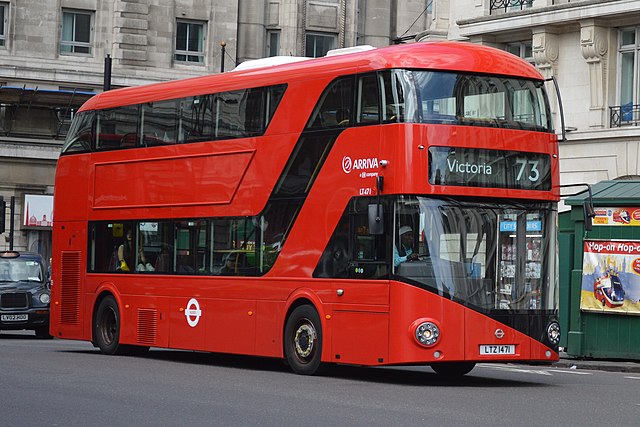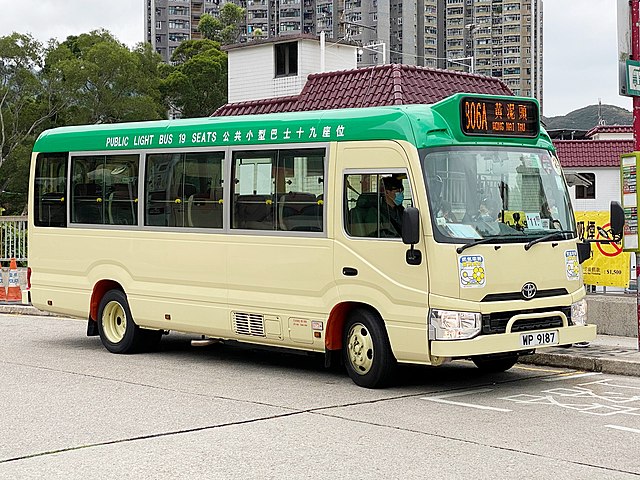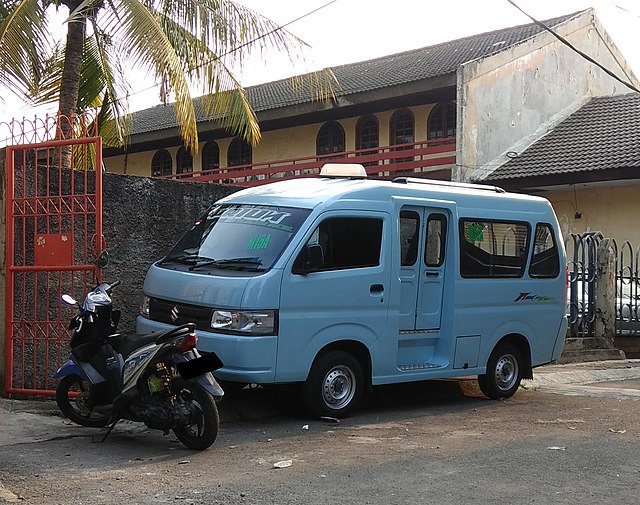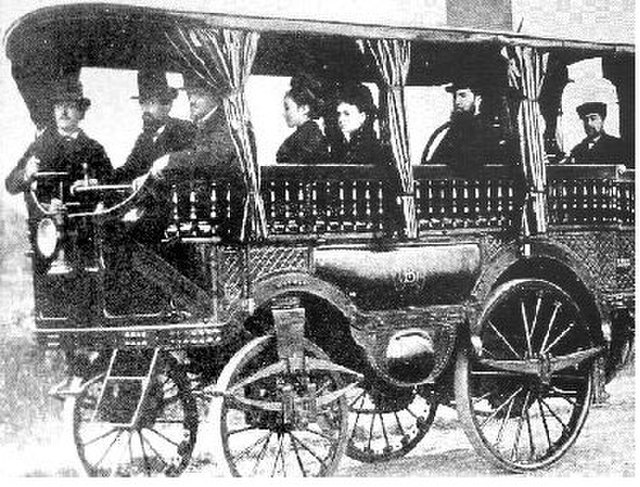A minibus, microbus, or minicoach is a passenger-carrying motor vehicle that is designed to carry more people than a multi-purpose vehicle or minivan, but fewer people than a full-size bus. In the United Kingdom, the word "minibus" is used to describe any full-sized passenger-carrying van or panel truck. Minibuses have a seating capacity of between 12 and 30. Larger minibuses may be called midibuses. Minibuses are typically front engine step-in vehicles, although low floor minibuses are particularly common in Japan.
Toyota Coaster LPG green public minibus in Hong Kong
Citroën Jumper minibus in France
Cacciamali Urby (built on Iveco Daily chassis) operating in Zagreb, Croatia
Minibus vehicle from Suzuki Carry used as public transportation in Indonesia
A bus is a road vehicle that carries significantly more passengers than an average car or van, but less than the average rail transport. It is most commonly used in public transport, but is also in use for charter purposes, or through private ownership. Although the average bus carries between 30 and 100 passengers, some buses have a capacity of up to 300 passengers. The most common type is the single-deck rigid bus, with double-decker and articulated buses carrying larger loads, and midibuses and minibuses carrying smaller loads. Coaches are used for longer-distance services. Many types of buses, such as city transit buses and inter-city coaches, charge a fare. Other types, such as elementary or secondary school buses or shuttle buses within a post-secondary education campus, are free. In many jurisdictions, bus drivers require a special large vehicle licence above and beyond a regular driving licence.

A New Routemaster double-decker bus, operating for Arriva London on London Buses route 73 (2015)
A New Flyer trolleybus operated by the Toronto Transit Commission in 1987
An early horse-drawn omnibus from mid-nineteenth century
Amédée Bollée's L'Obéissante (1875)








